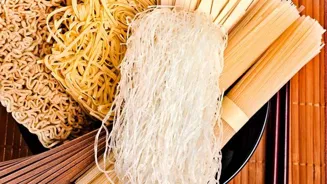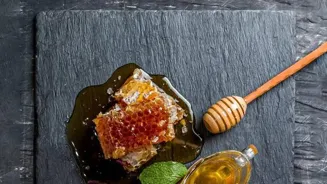Whenever someone mentions Asian food, the two things that immediately come to mind are rice and noodles. But do you know your noodles as well as your rice?
Read on to find out.
Chowmein
The most popular noodle, at least in this part of the world, is the Chowmein- a type of super-thin wheat noodle. The noodles are stir-fried with vegetables and tofu, and served as the main course. Sometimes they are also fried into a crunchy noodle cake.

Mung Bean Threads
These ultra-thin noodles are made mainly from mung bean starch paste, but other starch sources like potato, sweet potato, and tapioca are also used. They are popularly called cellophane or glass noodles because of their transparency when cooked.
While they are used in stir fries and soups in some countries, a host of other countries use cellophane noodles differently. For example, in India, glass noodles are called falooda and are served on top of a kulfi, a traditional ice cream.
Udon
Udon are thick noodles made in many Japanese homes by kneading whole wheat, salt, and water. They are between four to six mm wide, making them the thickest noodles in Japan. These extra-thick chewy wheat noodles are great in soups and stir-fries. Udon noodle is the comfort food of many Japanese. They are also sold dried, fresh, or frozen.
Ramen
Ramen is probably the second most popular noodle in Asia after Chowmein. These wheat noodles are sold fresh or in dried bricks all over the world. Ramen was so popularized in Japan that nearly every region in Japan now has its own variation of ramen.
Though traditionally Ramen is served as a noodle soup with a broth, you can also use crushed dried ones for sprinkling on salads.
Rice Vermicelli
Rice Vermicelli is often called rice noodles or rice sticks. It is often mistaken with the Mung Bean or glass noodles, but they are made from whole rice grains and not from the starch. Rice Vermicelli is used in stir-fries, soups, or spring rolls. You just need to soak them briefly in hot water to soften them.
Soba
Soba in Japanese means buckwheat, which is the key ingredient in making these thin Japanese noodles, hence its name. Buckwheat adds a distinctive nutty flavor, plus it is rich in protein and fiber, making it a healthier option. Soba noodles are great in soups and cold salads and are a feature in both street fast food and specialty restaurants in Japan.














